What you should know about Golda Meir, the world leader who grew up in Milwaukee
- Oops!Something went wrong.Please try again later.
Golda Meir was the Middle East's first female head of state. She was one of the signers of Israel's Declaration of Independence. She was an important activist in labor and Zionist causes.
Before all that, she made her mark as a 10-year-old crusader in Milwaukee, raising money to pay for her classmates' schoolbooks.
With a new movie about Meir's life, "Golda," due in theaters Aug. 25, here's what you should know about Golda Meir, her story and her Milwaukee connections.
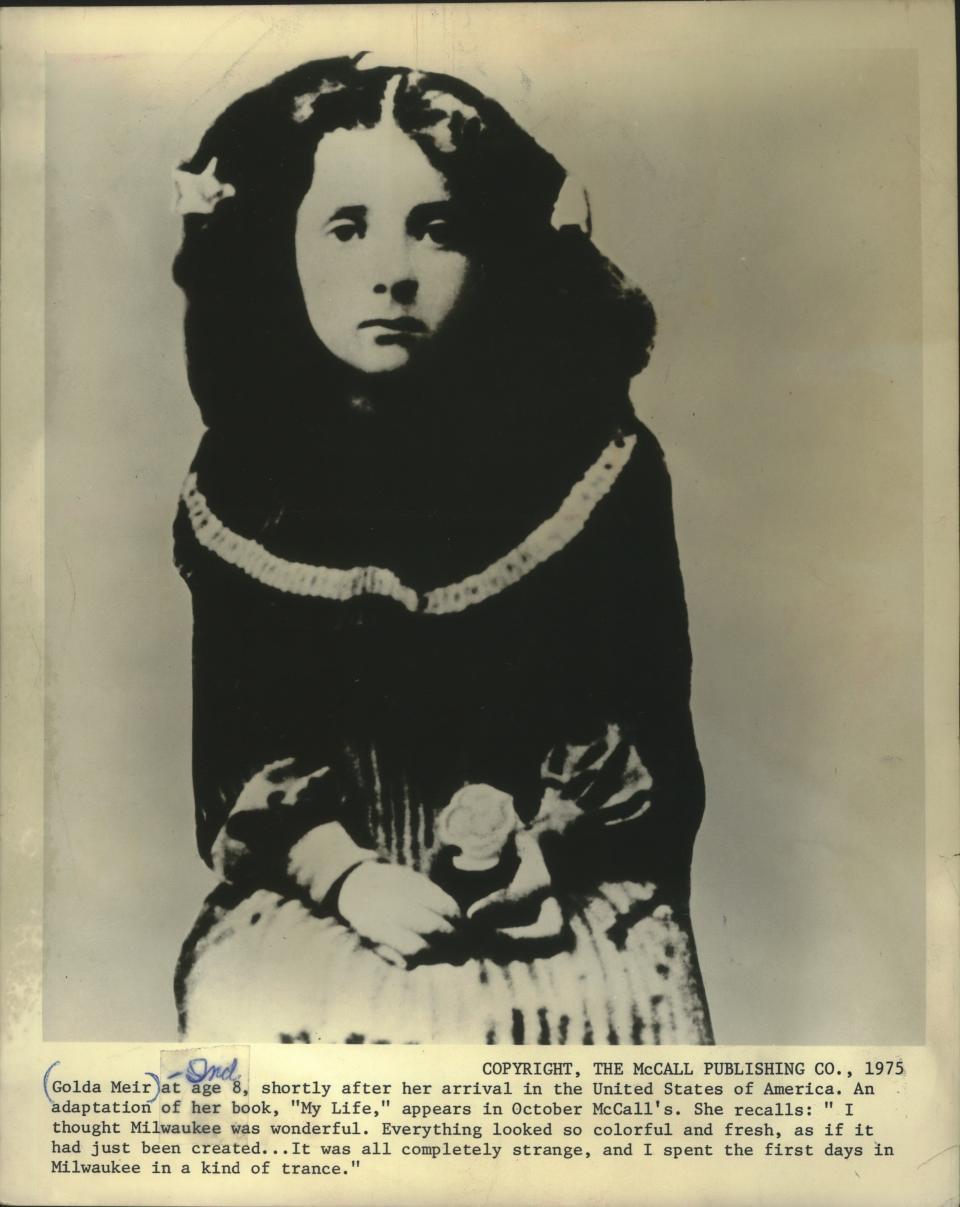
Where was Golda Meir born?
Golda Mabovitch was born in Kyiv in what was then Russia on May 3, 1898. Five years later, the family moved about 280 miles west to Pinsk; in both places, they faced anti-Jewish persecution. Not long after the family moved to Pinsk, her father, Moshe, immigrated to the United States to get the family out of Russia altogether.
How did Golda Meir end up in Milwaukee?
By 1905, Moshe Mabovitch was making enough of a living as a railroad carpenter in Milwaukee to bring his wife, Golda and her sisters to Milwaukee the following year. At the time, Milwaukee had a population of about 300,000 people, with a Jewish community of about 9,000 centered around Walnut Street.
How did Milwaukee shape Golda Meir's activism?
When Meir was a student at Fourth Street School, 1542 N. Phillips Ave., students had to buy their own textbooks; usually, they'd get them secondhand or from family members. But in 1908, the Milwaukee School Board announced plans requiring brand-new textbooks, which would add a big burden to poor families. So 10-year-old Meir helped form a club to raise money to help families buy schoolbooks. They rented a hall and put on a fundraising show; Meir made a speech and recited two Yiddish poems.
"We had the greatest success that there ever was in Packen Hall," Meir wrote to her older sister, Sheyna, who was in a tuberculosis hospital in Denver at the time. In the letter, Meir called the campaign her first "public work."
After graduating as class valedictorian from Fourth Street in 1912, Meir defied her parents (who wanted her to get married) and enrolled in North Division High School. When her mother arranged for her to marry a man who was twice her age, Meir fled to Denver to stay with her sister, enrolling in school and joining conversations on socialism and Zionism at her sister's home.
In 1914, she reconciled with her parents and returned to Milwaukee. After the outbreak of World War I, Meir and her father joined the People's Relief Committee, an organization helping Jews in Europe and the Middle East who were facing new persecution during the war. She also became active in the Milwaukee chapter of Poalei Zion, an international Zionist labor movement.
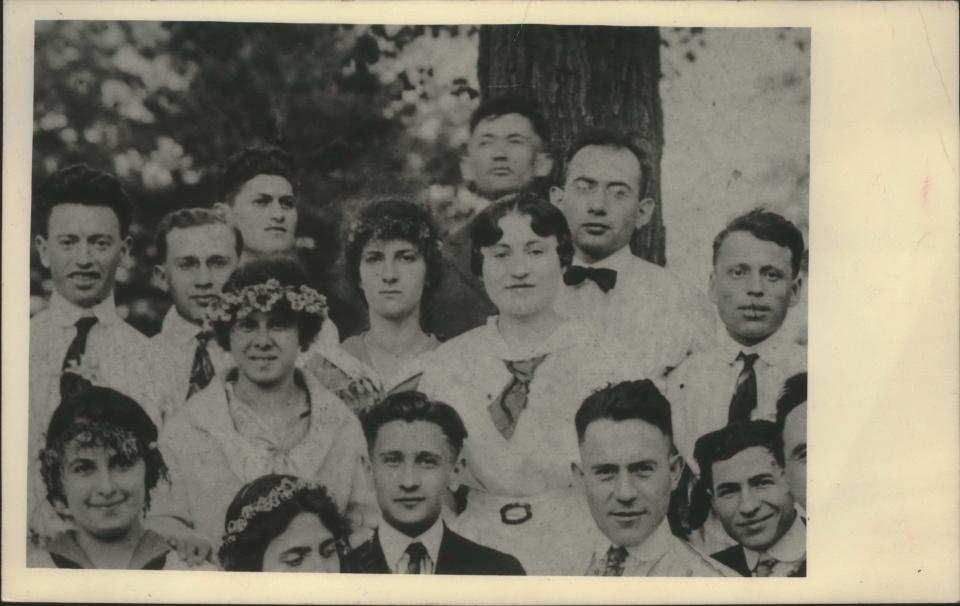
Meir graduated from North Division in 1916 and enrolled at Wisconsin State Normal School, but her activism took precedence. She was one of the leaders of the Milwaukee branch of the National Committee for the Defense of Jews in Eastern Europe, an organization protesting anti-Jewish pogroms; in a rally led by the committee in 1919, several thousand people marched through Milwaukee to a massive protest rally at what is now the Miller High Life Theater.
Why did Golda Meir leave Milwaukee for Israel?
Meir became a naturalized U.S. citizen in 1917, but because of her Zionist activism, she was determined to move to Palestine. That same year, she married her beau Morris Meyerson. The couple moved to Palestine in 1921, living in a kibbutz and in Tel Aviv before settling in Jerusalem.
How did Golda Meir become prime minister of Israel?
After years working with Jewish labor groups and the Jewish Agency, the organization that ran Palestine under British rule, Meir was one of the 24 signers of the Israeli Declaration of Independence. After serving as Israel's top diplomat in the Soviet Union, Meir was elected to the Knesset, Israel's parliament, in 1949 as a member of the Mapai, or Workers' Party. That same year, she was named labor secretary in Prime Minister David Ben-Gurion's cabinet. In 1956, she rose to become foreign minister but resigned in 1966 after being diagnosed with lymphoma.
After Prime Minister Levi Eshkol died unexpectedly in 1969, Meir, who was 71, was elected leader of Israel's Labor Party and became the country's fourth prime minister. Her time in office encompassed a tumultuous time in Israel's history, including the massacre of 11 Israeli athletes by Palestinian terrorists at the 1972 Munich Olympics and the 1973 Yom Kippur War. Meir resigned in 1974, after her coalition government was unable to form a government. She died in 1978 of lymphatic cancer at age 80.
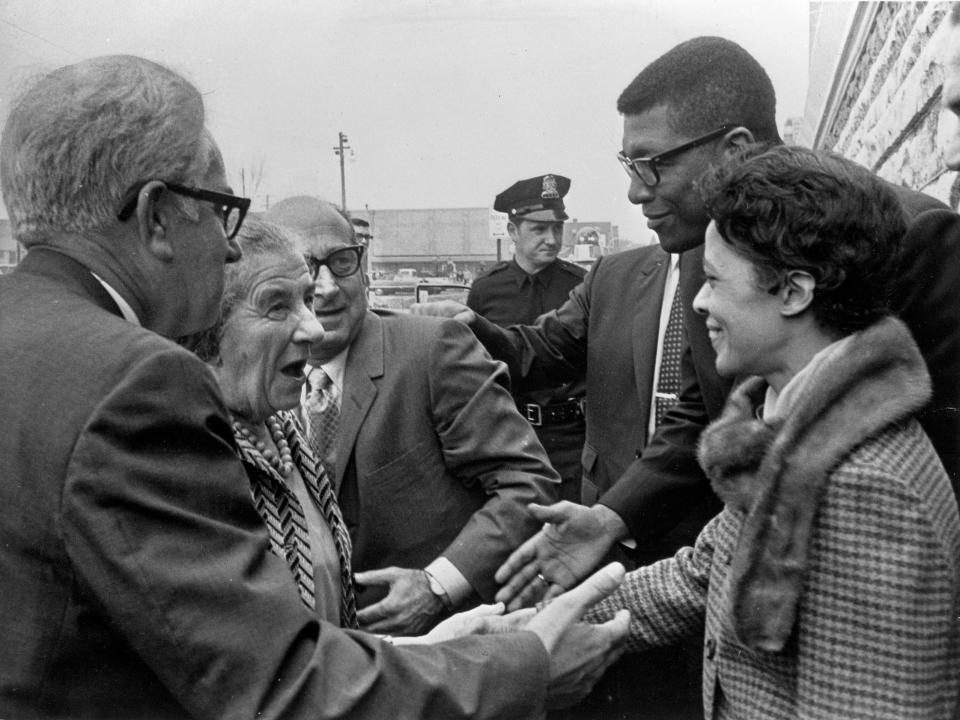
Did Golda Meir ever come back to Milwaukee?
Meir visited Milwaukee a number of times before she became prime minister, from promoting a Bonds for Israel fundraiser in 1951 to coming back home after receiving an honorary degree from the University of Wisconsin-Madison in 1960.
In the fall of 1969, Meir made an official visit to the U.S. as prime minister, a whirlwind trip that included a state dinner at the White House, dinners in her honor in New York and Los Angeles, and an address at the AFL-CIO's convention in Atlantic City.
Slipped into the itinerary was a stop in Milwaukee on Oct. 3, 1969. She spent some time at the Fourth Street School, had a day proclaimed in her honor by Mayor Henry Maier and addressed about 4,000 people at the then-new Performing Arts Center before heading back to the airport.
"I come back with love for the city, with appreciation and sentiment for what it has given me," Meir said on arriving in Milwaukee. "This is the city where I spent my youth … the city where I realized that with all the privileges and equality the Jewish people have in this great nation … that the Jewish people needed a place it can absolutely call its own."
Pro-Arab protesters, calling out Israel's treatment of Palestinians in the Middle East, picketed outside the Performing Arts Center when Meir arrived. One of the signs read: "No Shalom With Napalm."
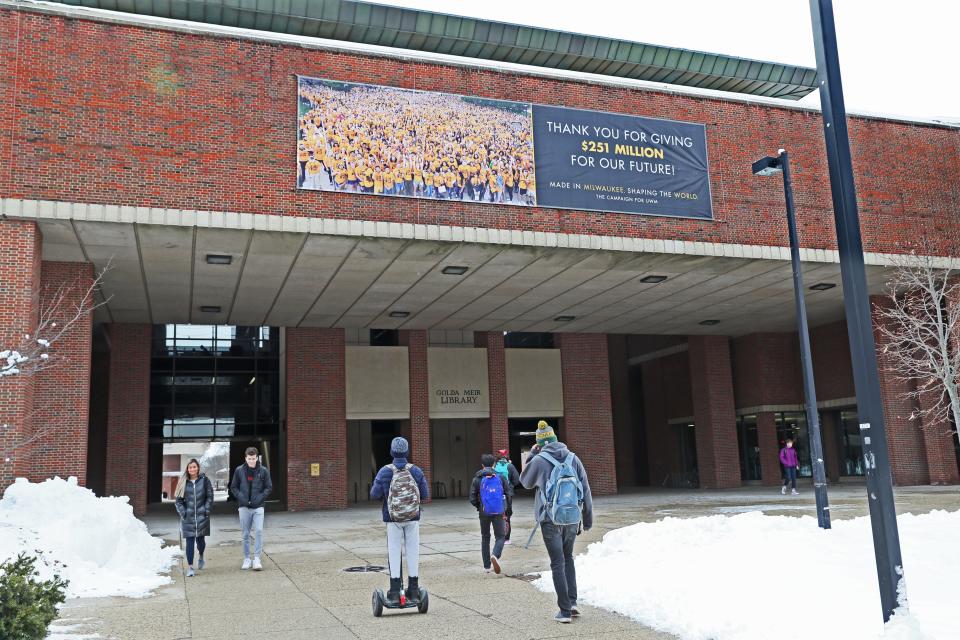
Where can you find tributes to Golda Meir in Milwaukee?
Two major local institutions keep Meir's name in Milwaukee's consciousness.
Milwaukee Public Schools' Golda Meir School: The Fourth Street School, where Meir went to grade school, was renamed for her in 1979. The original school is Golda Meir's lower campus, for students in third to fifth grade; there's also an upper campus, for students in sixth through 12th grades.
University of Wisconsin-Milwaukee's Golda Meir Library: In 1979, UW-Milwaukee named its main library at 2311 E. Hartford Ave. for Meir, who had attended one of the university's predecessor schools. At the dedication ceremony, about 100 protesters, most of them members of the group Community Coalition for Palestinian Rights, gathered outside the library, chanting anti-Zionist slogans and banging on the library's windows. Five people were taken into police custody after fistfights broke out inside and outside the library during the ceremony.
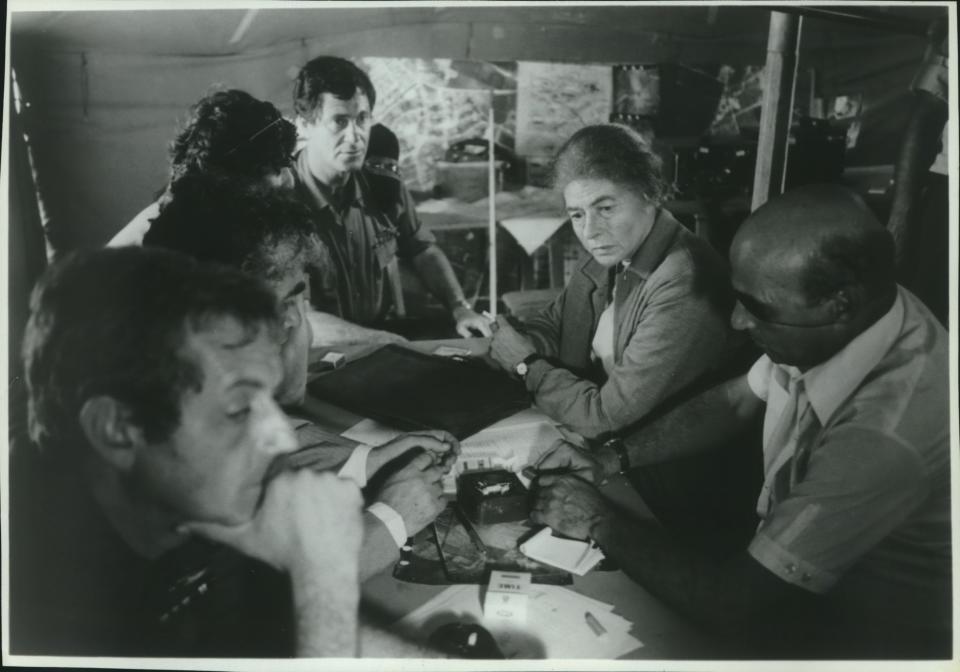
Golda Meir in popular culture
Meir's story has been told on stage and screen many times. Here's a sample.
"A Woman Called Golda": This made-for-TV biopic from 1982 stars Ingrid Bergman as Meir, with Judy Davis playing her in her younger years. The movie opens with Meir's visit to Fourth Street School but, confusingly, puts the visit in 1977 instead of when it actually happened, eight years before that. (The story is structured around Bergman as Meir answering students' questions about her life, with the events told in flashback. Milwaukee is not depicted in any of the stories.)
"Sword of Gideon": In this 1986 made-for-TV drama about a team of Israeli agents sent to hunt down the terrorist involved in the 1972 Munich Games massacre, Colleen Dewhurst (who coincidentally grew up in Milwaukee) plays Meir, who as prime minster green-lighted the mission.
"Munich": Steven Spielberg told the "Sword of Gideon" story in this 2003 movie and collected a few Oscar nominations for it. Among the movie's first-rate cast was Lynn Cohen as Meir.
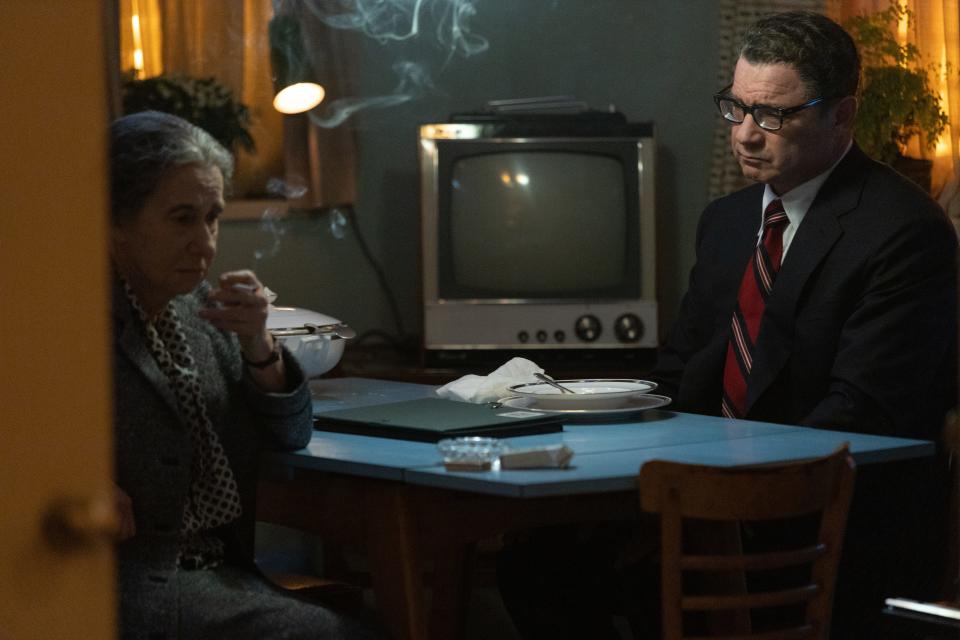
"Golda": Oscar winner Helen Mirren plays Meir in this drama centered on the prime minister's efforts to keep Israel from being destroyed during the 1973 Yom Kippur War. The movie is due in theaters Aug. 25, 2023.
Golda Meir on stage: Several theatrical productions have depicted various stages of Meir's life. Anne Bancroft played her on Broadway in the 1977 production "Golda"; 26 years later, Tovah Feldshuh played Meir in a sequel drama, "Golda's Balcony." A filmed production of "Golda's Balcony" came out in 2019. (Valerie Harper, who played Meir in a national touring production of "Golda's Balcony" that came to Milwaukee in 2005, also appeared in a filmed version of the production, released in 2007.) In 2013, Milwaukee's First Stage Children's Theater staged "To the Promised Land," a play by Milwaukee actor and playwright Jonathan Gillard Daly weaving together the story of Meir as a student at Fourth Street School in the 1910s and a Black girl in her early teens attending the same school around 1969, the year Meir visited.
Sources: Journal Sentinel archives; "Lioness: Golda Meir and the Nation of Israel" by Francine Klagsburn (Schocken Books); Jewish Museum Milwaukee (jewishmuseummilwaukee.org)
This article originally appeared on Milwaukee Journal Sentinel: What to know about Golda Meir, world leader who grew up in Milwaukee

